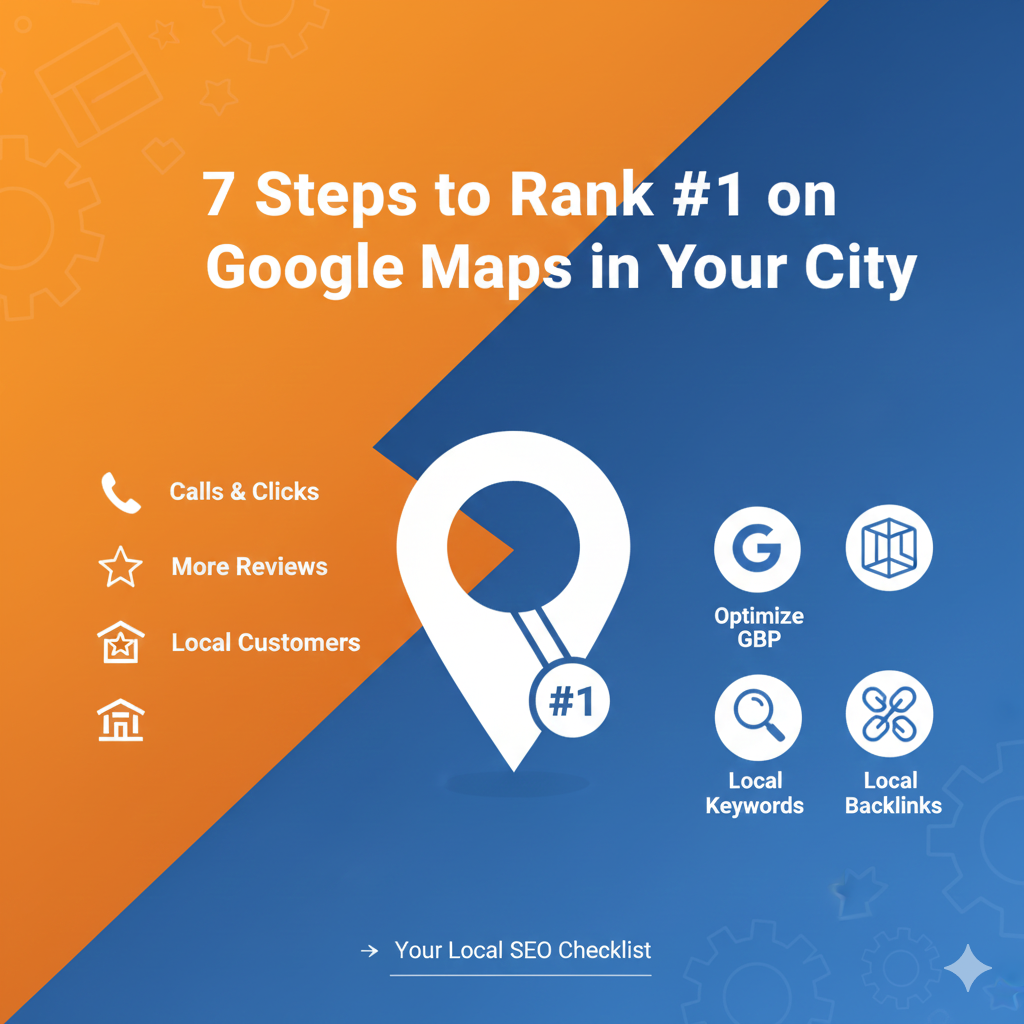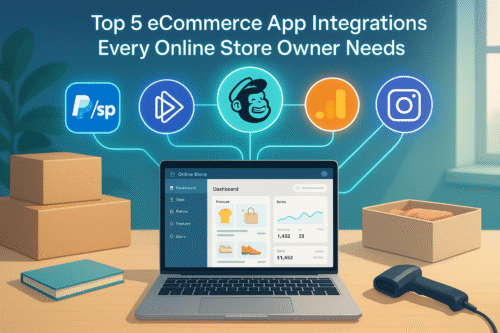Introduction: The Power of Local Search
When a potential customer needs a service—be it a “dentist near me,” “best pizza downtown,” or “plumber in [Your City]”—their search results are dominated by the Google Maps Local Pack.
The Local Pack is the prime, highly visible box showing 3 business listings, complete with maps, reviews, and contact info, usually appearing above the standard organic search results. Ranking here is non-negotiable for local businesses.
Achieving that coveted #1 spot on Google Maps requires more than just luck; it demands a systematic approach. This 7-step Local SEO Checklist provides the exact actions you need to take to dominate your market and drive foot traffic and calls to your business.
Your 7-Step Local SEO Checklist to Rank #1 on Google Maps
Step 1: Optimize Your Google Business Profile (GBP) – The Foundation
Your GBP is Google’s primary source of information about your business. Treat it like your second website.
- Action: Claim and thoroughly complete your listing.
- Key Details:
- Accurate NAP: Ensure your Name, Address, and Phone number are identical everywhere online (e.g., use “St.” vs. “Street” consistently).
- Business Categories: Choose the most relevant primary category (e.g., “Italian Restaurant”) and several secondary categories (e.g., “Pizza Place,” “Catering Service”).
- Description: Write a compelling description that naturally includes your main services and the city/neighborhood you serve.
- Photos/Videos: Upload high-quality, geo-tagged photos of your premises, staff, and finished work.
Step 2: Accumulate and Manage Google Reviews – The Trust Factor
Reviews are one of the strongest ranking signals because they prove customer experience and legitimacy. Quantity, quality, and recency all count.
- Action: Actively solicit genuine customer reviews on your GBP.
- Key Details:
- Integrate Asking: Ask for reviews at the point of service (e.g., via QR code on a receipt, or follow-up email/text).
- Respond to ALL Reviews: Always thank positive reviewers. For negative reviews, respond professionally and offer a solution. This shows Google and future customers that you care.
- Encourage Keyword Use: (Subtly) encourage customers to mention the service they received (e.g., “The best HVAC repair in town!”).
Step 3: Ensure NAP Consistency Across All Local Citations – The Credibility Check
Google cross-references your information across the web. Inconsistent NAP data erodes trust and hurts your ranking.
- Action: Verify your Name, Address, and Phone Number (NAP) are identical across all local and industry directories.
- Key Details:
- Major Directories: Update listings on Yelp, Facebook, Yellow Pages, and any industry-specific sites (e.g., Healthgrades for dentists, Houzz for contractors).
- Exact Match: Address components like abbreviations (“Rd” vs. “Road”) must be uniform everywhere.
Step 4: Optimize Your Website for Local Keywords – The Digital Home Base
Your website must confirm the local relevance established by your GBP.
- Action: Integrate city and service keywords into your website’s fundamental architecture.
- Key Details:
- Homepage Title & Header: Clearly state your service and location (e.g., “Expert Commercial Cleaning Services in Miami, FL”).
- Location Pages: If you serve multiple areas, create a dedicated landing page for each neighborhood or city.
- Local Business Schema: Implement structured data (Local Business Schema) on your site. This code explicitly tells Google your address, hours, and contact details in a machine-readable format.
Step 5: Build Local Backlinks and Mentions – The Authority Boost
Backlinks (links from other websites to yours) are still essential, but for local SEO, they must come from local sources.
- Action: Acquire links and mentions from local, trustworthy websites.
- Key Details:
- Local Sponsorships: Sponsor a local sports team, school event, or charity.
- Local Press: Be featured in local news outlets or community blogs.
- Chamber of Commerce: Get a listing and link from your local Chamber of Commerce.
- Why it Matters: A link from a local newspaper holds more weight than a link from a generic, international website.
Step 6: Leverage Social Media for Local Engagement – The Community Pulse
An active, locally focused social media presence signals community engagement to Google.
- Action: Maintain an active presence on platforms where your local audience spends time.
- Key Details:
- Location Tags: Always use location tags in your social media posts (Facebook, Instagram).
- Local Content: Post about local events, staff achievements, or community involvement.
- Run Local Ads: Use geo-targeting features in platforms like Facebook and Instagram to drive targeted local traffic.
Step 7: Monitor, Analyze, and Adapt – The Continuous Improvement Cycle
Local SEO is an ongoing process, not a one-time setup.
- Action: Regularly track your ranking and customer interactions.
- Key Details:
- GBP Insights: Monitor which photos get the most views, where calls come from, and search queries driving visibility.
- Competitor Analysis: Regularly check the GBP and website of the businesses ranking #1 and #2 to see what they are doing better.
- Update: Immediately update hours, photos, and services whenever changes occur.
Conclusion: Dominate Your Local Market
Ranking #1 on Google Maps for your essential keywords is the single most effective way to drive qualified local leads. By systematically working through this 7-step checklist—prioritizing GBP optimization, review management, and NAP consistency—you can gain a powerful competitive advantage and attract more customers right to your door.







